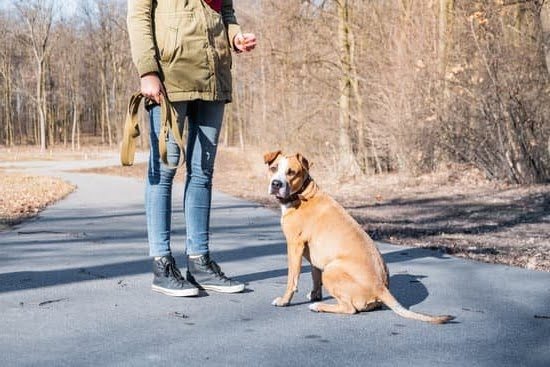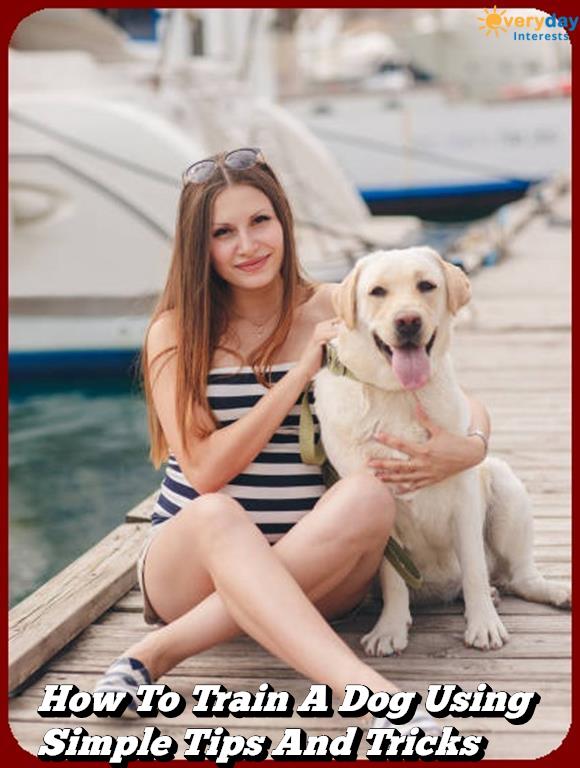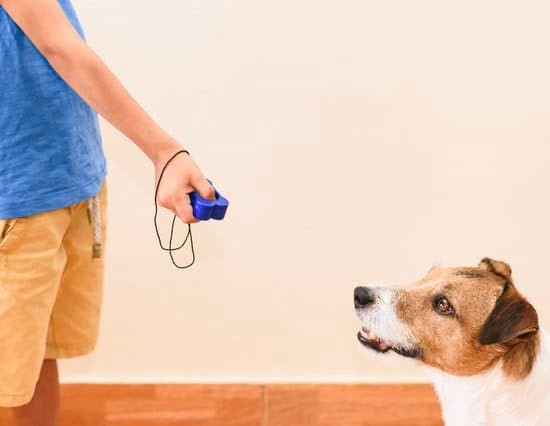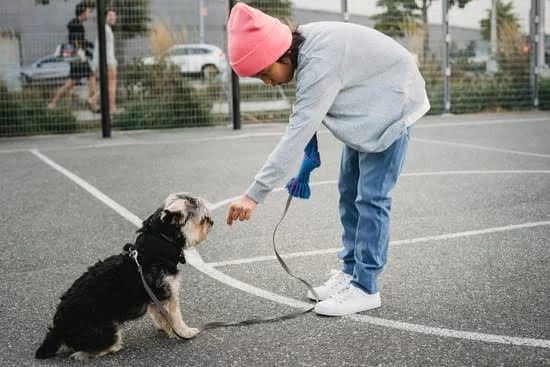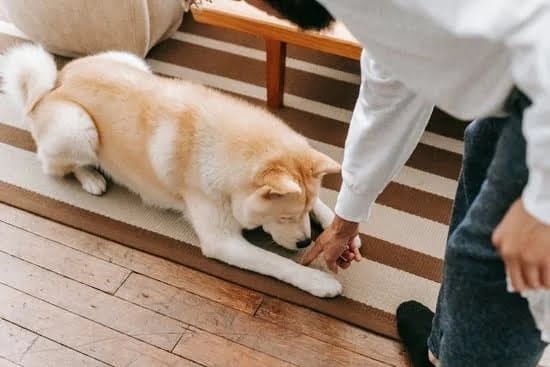Introduction
Training a dog to do simple tricks can be both an excellent bonding exercise between you and your pup as well as a great way to occupy their minds and help them work off some of their excess energy. It can also be beneficial in providing your pooch with the skills they need to feel more secure and comfortable in unfamiliar or social situations. Furthermore, once trained, completing tricks is both fun and rewarding for most dogs. Whether you are teaching a new puppy or helping an older dog learn new skills, you should always begin by using positive reinforcement techniques.
Positive Reinforcement: Rewarding Good Behavior
Positive reinforcement is an incredibly important part of crafting good manners for your pooch and encourages good behavior by rewarding it with treats or petting. Start by giving your pup commands such as “sit” and “down” that are easy for them to understand; whenever your dog gets the command right, follow up with verbal praise – ‘good job!’ – along with a food reward (like a treat) or physical touch like patting their head or stroking their fur. This will create a stronger bond between the two of you, while also instilling trust that when they obey commands, they will get rewarded. And don’t forget: consistency is key! Both verbal commands and physical actions must remain consistent across all training sessions so your pup knows what behaviors will result in rewards. With enough patience and practice, soon enough your furry friend will have mastered the command!
Building on Existing Skills: Learning New Tricks
Once your dog has successfully mastered certain basics like sit and down, you can move them onto learning other tricks such as playing dead or shaking hands. To begin, decide on which trick you would like your canine pal to learn and pick specific cues that signal when this behavior should start – for example: saying ‘bang’ when playing dead or placing their paw in yours for shaking hands. Make sure to give consistent praises for successful attempts at executing these cues correctly along with rewarding successes with treats so that gradually the cue commands correspond to the desired trick without any rewards needed after each successful action. Eventually, teaching new tricks should become easier once their existing skill set expands from mastering the basics!
Establishing a Positive Learning Environment
Establishing a positive learning environment for your dog is essential to successful training. Start by reinforcing the desired behavior with rewards such as treats, praise, or toys. Positive reinforcement encourages desired behaviors to be repeated in the future and allows your pup to feel safe and relaxed as they learn. Additionally, keep training sessions short — no more than 15 minutes so that you can end it on a good note. Establish some basic guidelines for your pet so he knows what to expect during each session. Provide space for him to focus, consistent commands and cues, and plenty of rest times when needed. Your dog should never be forced to perform a trick; instead, reward him when he has completed the task correctly. Doing this will create an enjoyable learning atmosphere that is both beneficial and fun for you and your pup!
Understanding Dog Cognition and Behavior
Training a dog to do simple tricks can be a fun and rewarding way for you and your pet to bond. However, it is important to remember that this process must include understanding dog cognition and behavior. Training relies heavily on consistency and patience, so it requires both owner and pet to develop a relationship of respect and trust. consider the following if you are looking to train your dog:
1. Understand basic communication techniques such as hand signals, commands, verbal cues, or environmental cues that make your dog pay attention when you call it or give commands
2. Select the right type of training method based on your pet’s individual learning style as each pup will have its own preferences
3. Start with small tricks that can easily be accomplished using positive reinforcement methods; this will help ensure success
4. Remain consistent in your training technique; repetition is key when teaching new skills
5. Lastly, take into account the breed characteristics when teaching the trick; some breeds such as hounds may take more time to learn new skills than smaller breeds such as Chihuahuas
In addition to considering these points before beginning training, developing an understanding of canine cognition and behavior is incredibly important for owners wanting their pets to master complex tasks. Dogs have thousands of years of genetic memory embedded in their minds which makes them efficient visiocomputers capable of recognizing patterns quickly within seconds. To tap into this intelligence and optimize training sessions, owners should use repetition with variety during exercises while also rewarding desirable behaviors with treats or praise. Understanding animal behavior along with practice and patience are key components in effective training technique; by following these tips along with basic communication strategies you will have newfound success getting your pup to do simple tricks!
Command Building
To train your dog to do simple tricks, you must first have a well- established command structure. Without the proper command structure in place, your pup will not understand what it is you would like him or her to do. Common commands you may want your dog to know include: sit, stay, come, lay down, heel and shake. The most important thing when teaching commands is to ensure that they are taught consistently so that the pup knows exactly what it is he/she should do each time it hears one of the specific commands as this will create trust and understanding between you and the pup.
In addition to these basic commands, there are also some more specific tasks such as how to fetch an object when you throw it (this can be a toy or even just a ball), rollover and playing hide and seek with either you or treats. Each trick needs to be broken down into a number of steps so your dog can learn them in an orderly manner. When teaching a certain trick make sure that the pup has mastered one step before trying to go on another step. For example if you are teaching him/her how to perform “fetch”, start off by showing them the toy or object and allowing them time for familiarization until they understand that this is what they need to pick up when instructed. Then move on making sure each step is successfully executed before moving onto the next one. Lastly positive reinforcement such as treats or verbal praise helps keep the pups attention focussed on the task at hand while strengthening the bond between both of you.
Getting Started with Basic Commands
If you’re looking to teach your dog simple tricks, the best place to start is by establishing basic commands. These tasks help enforce obedience and establish trust between you and your pup. Commands like sit, stay and lay down are simple yet effective. To start, give a verbal command—like “sit”—and gently help the pup into position with your hand. Give an ample amount of praise when they obey, as well as treats to reinforce good behavior. Repetition is key here; after multiple training sessions, the pup will eventually obey instantly upon hearing the command. If it takes too long for them to obey or if they begin ignoring commands all together, you may need to adjust how you’re giving instructions or consider more complex methods of training.
Once you have successfully trained your pup with basic commands like sit, stay and lay down, you can start teaching them more complex tricks like shaking hands or rolling over. With new tricks that require more intricate movements from the pup, break down each step into tiny parts before teaching them in sequence, based on the same principles of reinforcement used to teach basic commands. When teaching complex tricks be sure to be patient—it will take time for your pup to master these complicated behaviors, but if done properly and reinforced often with praises and treats it’s very likely they will get it quickly! Make sure not to overwhelm them or rush their learning process; too much pressure from training could lead to undesirable results.
Teaching Your Dog to Sit and Stay
When training your dog to do simple tricks, one of the most important ones is teaching them “sit” and “stay.” Start by having your dog in a standing position. Next, hold a treat up to their nose and slowly move it over their head towards their back. This will cause them to naturally lower their rear end towards the ground. As soon as they hit the ground say “Sit” and offer a reward for doing so. Once they are sitting, give them the command to “Stay.” Take one step back from them before you release them from the “Stay” command with another reward. Repeat this process until your dog can stay in the sitting position without you nearby. When possible use treats or rewards that have special meaning for your pet, such as their favorite toy, belly rubs, or verbal praise like telling them how good they did! With practice and repetition, your pup will quickly start understanding and complying with the commands “Sit” and “Stay” every time!
Teaching Your Dog to Lay Down and Shake
Training a dog to perform simple tricks is not only possible, but it can be very rewarding for both you and your pet! As with any type of animal training, the key is patience and rewards. Here are the steps for training your canine companion to lay down and shake:
First, find a quiet area that has no distractions. Secure treats such as small pieces of hot dog or cheese in your hand. Make sure that your dog does not see what you have as this could become a distraction and disrupt the process. Next, show your dog the treat in your closed hand then move your hand slowly towards their head while saying “lay down”. When they follow the command, use your free hand to signal downward motion while keeping the treat close to them. You may need to repeat the commands several times before they understand the motion you’re expecting them to do. Immediately after they lay down reward them by giving them the treat and make sure to praise them with excited tones or words.
When they start understanding how to lay down on command, you can introduce a new cue word such as “shake” when presenting additional treats in front of their nose which will give him/her an idea of what action is expected from them minutely afterward. When he/she responds correctly, don’t forget to praise thoroughly and give out rewards immediately following correct behavior! With enough repetition and patient training, even complex tricks can be taught effectively! Make sure that each lesson ends with positive energy between you both – this will create a stronger bond moving forward in future lessons!
Teaching Your Dog to Fetch Objects
Fetching objects is a classic trick that any pup can learn with the right training. The easiest way to train your dog to do this is to start by setting the fetching response—that’s the verbal cue that makes the dog bring back an object when you throw it. To do this, start by giving your dog a snack or treat every time you throw an object and say “fetch!” Eventually, your pup will understand that “fetch” means bringing back whatever it was that you threw.
Once they have this basic command down, begin gradually increasing the distance between you and your pup as they retrieve their toy. After they’ve been reasonably successful at different ranges (about 20 feet apart), try introducing some other objects for them to retrieve. Anything from slippers and cell phones to keys and books will give them practice with recognizing specific items within larger collections of things. A great way to reward your pooch as they learn new items is using praise, cuddles, or treats. This will encourage them while reinforcing their correct responses. Lastly, it’s important to remember that teaching dogs takes patience and repetition – so don’t expect too much of your pup too soon!
Keeping Training Sessions Engaging and Rewarding
When you are training your dog to do simple tricks it’s important to make sure that both the sessions and reward system utilized during the process is fun and engaging. In order to ensure that your pup remains interested in learning, it is best to divide any training session into a few short segments and only focus on one trick at a time. In between these intervals, be sure to give your furry friend plenty of breaks and lots of compliments when they get something right. Be patient – praise is your best tool for keeping them engaged and motivated during the process.
Rewarding good behavior is essential when teaching your pet to do simple tricks. Positive reinforcement such as treats, verbal affirmations (i.e., “good boy/girl”) or playtime with their favorite toy should be given whenever possible during and after each successful attempt at each particular trick. Additionally, make sure that should accidental mistakes occur, you take a step back before reminding them what needs to be done correctly; using any type of physical force or negative reinforcement in this case would only discourage them from picking up on instructions faster in the future. Over time, your pup will gradually understand how they can purposely perform each individual trick given enough patience and consistency on behalf of their handler – so stay encouraged!
Troubleshooting Common Training Problems
Training a dog can be an incredibly rewarding experience. However, teaching your pup to do simple tricks can sometimes be more difficult than it seems. If you’re having trouble teaching your pup a basic trick, there are a few troubleshooting measures you should take. First, make sure that you are providing enough positive reinforcement in the form of treats or verbal praise. Make sure that the treat is something that your pup consistently finds rewarding and desirable; if the treat doesn’t incentivize them to perform the trick, they may not be motivated enough to make progress. Next, break down the trick into smaller steps so that it is easier for them to understand and remember what they need to do. Finally, patience is key; many dogs won’t understand a new behavior right away and it will take time and repetition for them to get it right. If you need more help training your pet, consider reaching out for assistance from professional trainers or animal behaviorists who specialize in canine behavior modification.
Reviewing Advanced Tricks and Exercises
Training a dog to do simple tricks like sit, stay, and fetch can provide them with mental stimulation. Dogs require consistent and rewarding exercises to prevent boredom and misbehavior. Training a dog to do more advanced tricks can help to further engage their minds and intelligence. One of the most popular advanced tricks to teach your furry friend is a shake hands exercise. This is done by saying “shake” while offering your left hand on your right palm up and down until the pup learns the concept of moving his paw back and forth. You can also try teaching your dog “lie down” or “roll over” commands by holding a treat just above their nose while pointing at the ground or making an circular motion with your hand beside their head or body respectively. When they follow these gestures you can reinforce it with verbal praise or rewards. Finally, teaching the dog “speak” involves repeating the command every time it barks until he gets used to responding whenever you say it. With enough patience over time, dogs can learn more complex tricks such as fetching specific objects from another room, walking around in circles on command, playing catch with frisbee discs, and even going for jogs alongside its owner. With proper training techniques and lots of reinforcement each trick should come naturally to any pup!
Final Tips for Training Multiple Tricks
Once you’ve trained your dog to do a few simple tricks, there are a few extra steps that you can take to make sure those skills continue. Regularly practice the tricks with your dog – repetition is key to developing and maintaining instinctual behaviors in animals. Touch up training by reinforcing both successes and mistakes; when your dog performs as expected, reward them with treats or kind praise. Should they make an error, calmly correct the mistake and guide them into correct behavior through activities like positive redirection and understanding demonstration. The same mindset should apply when adding new tricks to your pup’s repertoire – don’t expect too much right away and take time gradually introducing new stimuli. Crafting engaging experiences for your dog keeps them motivated and improves results overall. Finally, monitor the effects of learning on their mental health; dogs cope with stress similarly to humans so overworking them can reduce their enjoyment of training sessions and lead to disengagement. Instead, keep things fresh through structured but light-hearted lessons that maintain interest without fatiguing your pet unfairly. With these principles in mind, any pooch can learn complex education routines in no time flat!
Conclusion
Training your dog to do simple tricks can provide them with valuable mental stimulation and physical exercise. In training your dog, you need to be consistent, patient and remain focused on the task at hand. Make sure that there is a clear reward system in place and that each training session ends happily for you and your pup!
One of the great benefits of training your dog to do simple tricks is that it strengthens the bond between pet parent and pup. Training doesn’t just help bridge communication–it creates trust as you effectively teach your pup how to understand what it is that you want them to do. Additionally, teaching basic commands will help with day-to-day management, allowing you to control their behavior when they are outside or around other people. Engaging in trick training can also give your pup an outlet for energy and boredom–which helps reduce destructive behaviors at home. All of these things work together to create a well-rounded pet who is happy to obey commands as needed but still have fun learning new things throughout their life. Furthermore, refreshing their tricks every now-and-then ensures continual mental stimulation for your pup so that they don’t become bored easily which prevents restlessness or misbehavior. All in all, trick training offers pets more than just entertainment–it’s important maintenance for a well balanced relationship between you and your furry family member.
Bonus
Training a dog to do simple tricks is a great way to keep both the mind and body of your pup active and engaged. Start by teaching basic commands like “sit”, “down”, and “stay”. During the training process, make sure to use positive reinforcement such as treats, verbal praise, or even a game of fetch with your pup. As you give commands, be sure that they are said in an authoritative tone and always remember to reward desired behavior while moving past any undesired ones.
When it comes time to start teaching more complex tricks, gradually add new ones into the mix. Make sure to break down each element of the trick into smaller steps so that your pup can easily understand them. Again using positive reinforcement for correctly performed tasks is important. If done correctly and consistently, your pup will soon know how to influence their environment through performing tricks: from ringing bells when needing to go potty, obeying hand signals for fun games and more!
To help solidify skills learned during training sessions, practice them throughout the day in various environments – inside different rooms in the home when friends come over or on walks outdoors. Take advantage of these times and ask your pup for all commands that have been previously learned, as well as unlearned ones; this will help strengthen his memory even further!
As you move through teaching your pup simple tricks and further onto advanced ones, there are plenty of sources available online that offer comprehensive instructions regarding dog obedience basics/training methods:
– The American Kennel Club’s “AKC GoodDog” virtual training classes
-The Dog Training Me app
-Victoria Stillwell’s Positively Dog Training site
-The Monks of New Skete’s Bark Busters tutorial video series
-Kikopup YouTube channel with extensive tutorials on teaching a dog basic manners

Welcome to the blog! I am a professional dog trainer and have been working with dogs for many years. In this blog, I will be discussing various topics related to dog training, including tips, tricks, and advice. I hope you find this information helpful and informative. Thanks for reading!

